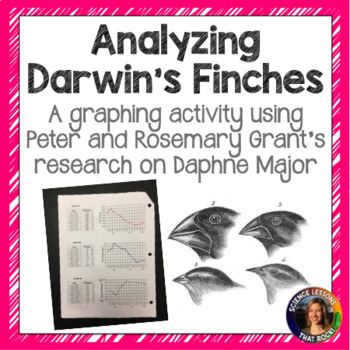Analyzing Darwin's Finches- Evolution Graphing Activity
- Zip
- Google Apps™

What educators are saying
Also included in
- Bundle and save with this evolution unit! Check out the previews of the lessons, labs, and activities included in your purchase!Be sure to follow my TpT store by clicking on the green "follow me" next to my seller picture to receive notifications of new products and upcoming sales. Don't forget to lPrice $62.40Original Price $78.00Save $15.60
Description
How do we know Darwin was right about evolution via natural selection? In this activity students will read/learn about Peter and Rosemary Grant, a couple from Princeton University who traveled to the Galapagos to conduct research. Students will learn what happened to the finch population on Daphne Major following a severe drought, and again following an El Nino. Students will graph data from the Grant's research and answer questions.
This is a great activity to include with the HHMI video clip found here.
If you enjoyed this lesson, check out my other evolution lessons!
Galapagos Tortoises- Speciation activity
Analyzing Darwin's Finches graphing activity
Battle of the Beaks Lab FREEBIE
Be sure to follow my TpT store by clicking on the green "follow me" next to my seller picture to receive notifications of new products and upcoming sales.
Don't forget to leave feedback to earn TpT credits that can be used for future purchases!
Want free tips and resources sent to your inbox once a week? Subscribe to my newsletter! You can also...
♻️ Check out my blog
♻️ Follow me on facebook
♻️ Follow me on instagram
♻️ Follow me on pinterest



